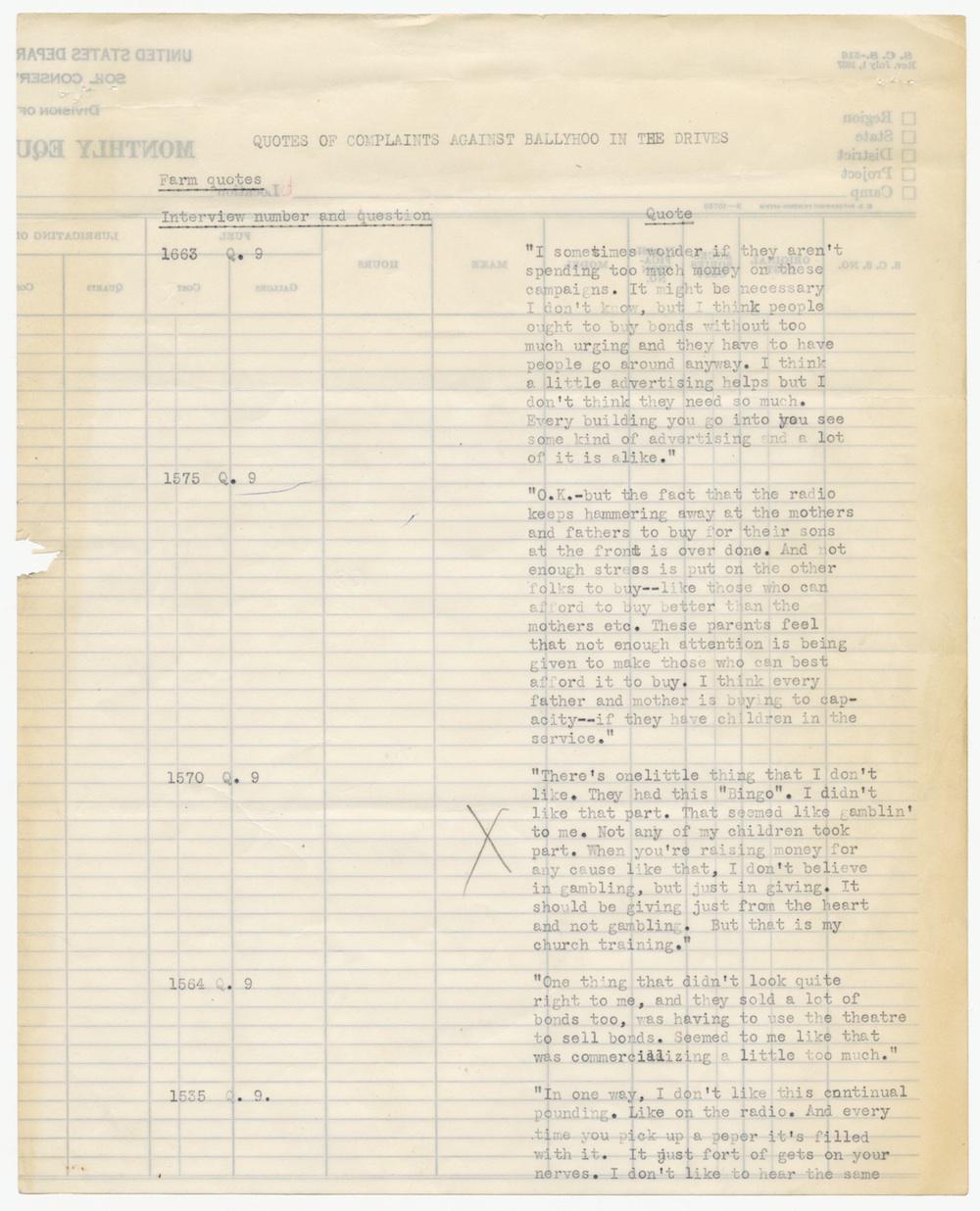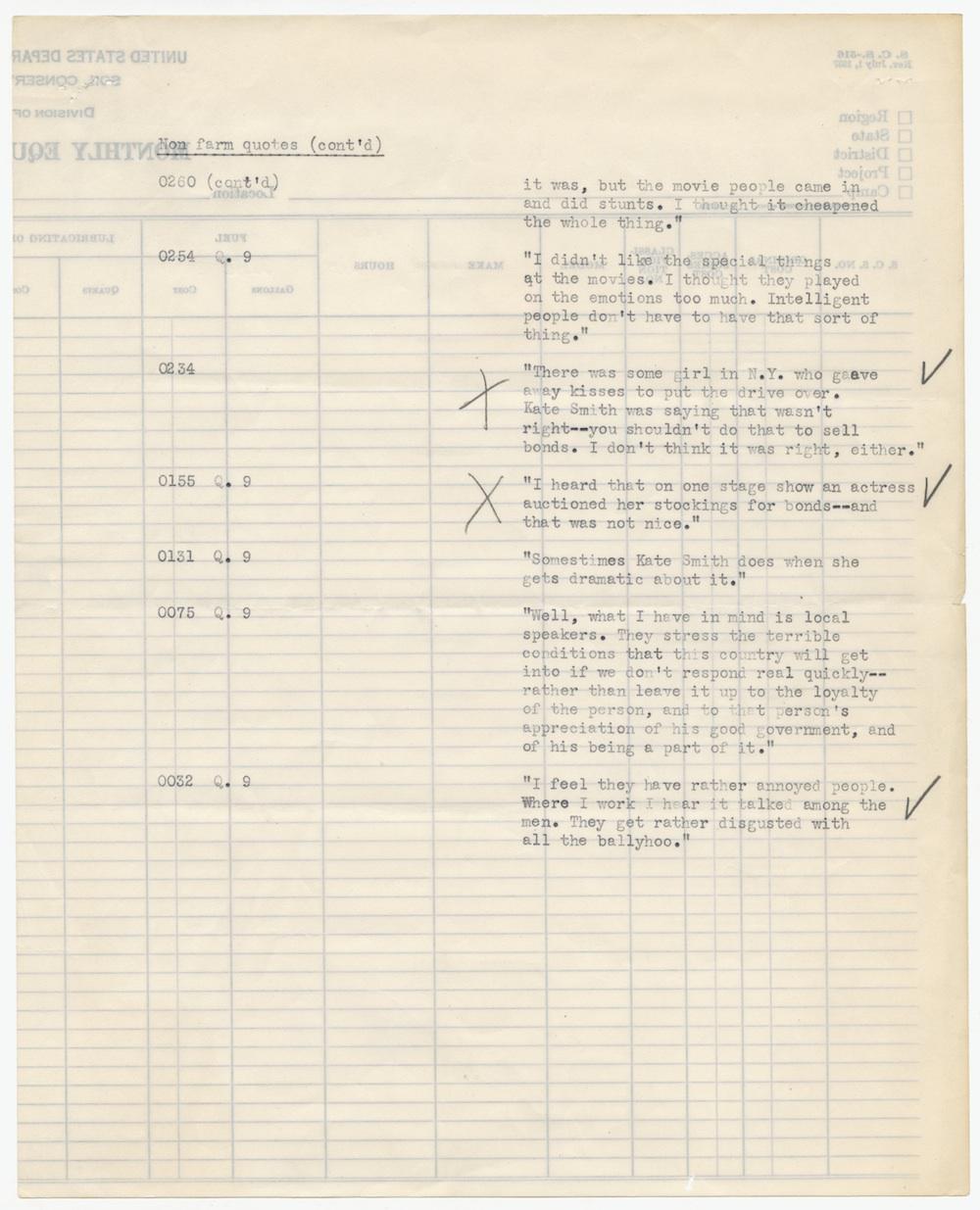The Vault is Slate’s history blog. Like us on Facebook, follow us on Twitter @slatevault, and find us on Tumblr. Find out more about what this space is all about here.
Propaganda from war bond drives during World War I and World War II—colorful, insistent, and guilt-inducing—plays a big part in our visual sense of the history of the home front. These pages, from a survey conducted by the Bureau of Agricultural Economics, give us a rare chance to see how some people really felt about war bond advertising during the World War II.
The U.S. government turned to war bonds as a way to fund the immense investment in military production and personnel mobilization. There were some negative consequences of the mass campaign to sell Liberty Bonds during World War I, with some citizens experiencing bullying and public shaming. (Nonbuyers in some locations had their homes painted yellow, for instance.)
Historian James J. Kimble writes that the government hoped to learn from this experience when it came to planning their World War II efforts, quoting Treasury officials who decreed: “There should be no ‘drive’ psychology, no hysteria, and no devices to honor purchasers that would stigmatize non-purchasers.” Instead, the government mounted a near-constant ad campaign, with newspapers, radio, billboards, and magazines donating over $180 million in advertising space.
The revised approach seems to have worked. Citizen responses to the bureau’s questions about war bonds don’t mention harassment or stigma. Instead, respondents found fault with the constant presence of bond advertisements, critiquing the very need for a marketing-driven approach to selling patriotic duty. “I feel that everyone knows what the boys are doing and should buy them anyway,” one citizen replied.
And some respondents just didn’t like the irritation of “turning the radio on and hav[ing] some long haired nincompoop urging you, in a rather high falsetto to buy more bonds .… We work, and in our leisure moments we want to hear something interesting.”
Despite any annoyance some Americans might have felt, by the end of the war around 85 million of them had purchased war bonds, affording the federal government $185.7 billion.

National Archives.

National Archives.

National Archives.

National Archives.